SAIF AL-ADEL, MOHAMMED ATEF AND ABU FARRAJ AL-LIBBI
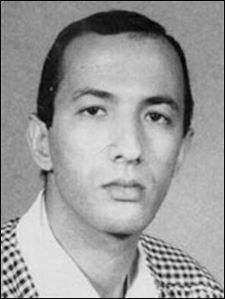
Saif al-Adel Saif al-Adel, a one-time Egyptian army officer in charge of Osama bin Laden’s security, was named the new Al-Qaida military chief after the arrest of Abu Zubaydah and Khalid Shekh Mohammed in the early 2000s. Also affiliated with Egyptian Islamic Jihad, he has a $25 million price on his head and has been indicted for his involvement in the U.S. embassies in Kenya and Tanzania.
Also known as Muhamad Ibrahim Makkawi, Saif al-Adel served as a caretaker leader after Osama bin Laden’s death. He is regarded as a top Al-Qaida’s strategist and military leader and is considered as more secretive and less of a show off than Khalid. He was still at large as of 2011
Mohammed Atef was Al-Qaida’s military commander and Osama bin Laden’s operations man. A former Egyptian policeman who fought with Osama bin Laden in Afghanistan, he became Al-Qaida’s military chief in 1996 and was one of Osama bin Laden two most trusted advisors. His daughter was married to one of Osama bin Laden’s sons. He was killed in an air strike outside of Kabul on November 17, 2001.
Mohammed Atef was regarded as a superb planner and tactician and is believed to have been involved in attacks on U.S. forces in Somalia, the bombings of the U.S. embassies in Africa in 1998, the strike on the U.S. destroyed Cole off of Yemen and the attack on the World Trade Center in New York on September 11, 2001.
Abu Farraj al-Libbi, a Libyan who had been granted political asylum in Britain, acted as Al-Qaida’s operations chief in Pakistan and was involved in the assassination attempts f Pakistan President Musharaff. He had a $1 million price on his head. He took over as operational chief after the arrest of Khalid. He took over the No. 3 position in Al-Qaida after Khalid Sheikh Mohammed’s arrest. He was captured in a shoot out in Warzistan, Pakistan in May 2005 and turned over the U.S. A month later.
Abu Yahya al-Libi

Mohammed Atef Abu Yahya al-Libi became Al-Qaeda’s No. 2 leader after Osama bin Laden’s death. A charismatic commander who rose to prominence in Al-Qaida after the U.S. invasion of Afghanistan and September 11th, he helped steer the terrorist group after bin Laden’s death and was a respected theologian and trusted lieutenant of both bin Laden and al-Zawahiri. At the time of his death in June 2012, one source told The Times, he was effectively leading the military and operation activities of Al-Qaida. He had a $1 million price on his head.
Abu Yahya al-Libi was among a collection of aliases used by a militant whose given name was Muhammad Hasan Qaid, according to the International Institute for Counter-Terrorism. He was born in 1963 and studied chemistry before becoming a militant. Viewed by some as a possible successor to Osama bin Laden, he was the leader of the Libyan wing of Al-Qaida which over time had become more powerful as the Egyptian wing headed by al-Zawahiri shrunk in size. Libi played an important role shaping Al-Qaida’s propaganda, wrote extensively about global jihad and released a number of videos that were widely disseminated by Al-Qaida websites. [Source: Joby Warrick and Greg Miller, Washington Post, June 5 2011]
Joby Warrick and Greg Miller wrote in the Washington Post: Libi “was one of the last surviving members of the generation of al-Qaeda fighters who battled against the Soviets in Afghanistan. He was admired among the group’s rank and file and served as a bridge between al-Qaeda’s Pakistan leadership and affiliates around the world. Libi also possessed credentials that allowed him to issue religious edicts and operational mandates to the group’s adherents. A U.S. official described Libi as one of al-Qaeda’s “most experienced and versatile leaders.”Libi “played a critical role in the group’s planning against the West,” said the U.S. official, who spoke on the condition of anonymity to discuss American counter-terrorism operations. “There is no one who even comes close in terms of replacing the expertise AQ has just lost.”
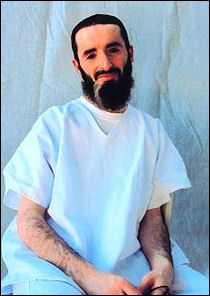
Abu Faraj Al-Libbi “Libi is the latest in a series of leaders to be killed within months of ascending to al-Qaeda’s top operational post. The position was considered the group’s No. 3 job before bin Laden’s death. Libi, thought to be in his late 40s, had moved into the No. 2 spot after the death in August of Atiyah abd al-Rahman, another Libyan national killed in a missile strike. Like his predecessor, Libi was regarded as the group’s general manager, answering to al-Qaeda’s senior commander, Ayman al-Zawahiri. In a measure of the rapidity of that turnover, Libi was not even listed on public U.S. counterterrorism charts until 2009, when he was added to the Rewards for Justice Web site, which until this week had offered $1 million for information on his whereabouts. B24
Libi, a former member of the Libyan Islamic Fighting Group, rose to celebrity within al-Qaeda’s ranks after he escaped in 2005 from the U.S. detention facility at Bagram, Afghanistan. Then he began appearing in videos in which he talked about lessons he learned while watching his captors, which he described as cowardly, lost and alienated. Jarret Brachman, a government consultant and al-Qaeda expert, said Libi was embittered by his imprisonment and animated by an ideology that was virulently anti-Western and “extreme,” even by al-Qaeda’s standards. “He was off the reservation, ideologically,” Brachman said. “He was an absolutist, at war with the West, at war with the Shia. Yet he knew how to package his views and communicate them in a way that sold.”
Greg Miller wrote in the Washington Post: “Libi, who is considered a dynamic figure, rose rapidly through al-Qaeda’s depleted ranks. He spent five years as a religious student in Mauritania in the 1990s, giving him credentials on religious matters that few in al-Qaeda can match. His operational experience includes serving as a field commander for al-Qaeda in Afghanistan. Libi has attracted a following among militants through a series of videos in which he has recounted his escape from the U.S. prison at Bagram air base in 2005, as well as his interpretation of world events. In one tape issued in October 2011 he urged Algerians to revolt against a government that “opened your country to the bastards of the West to enjoy your resources, and made your honorable children circle the Earth asking people for alms,” according to a translation by the Site Intelligence Group. [Source: Greg Miller, Washington Post, November 22, 2011]
Because of Libi’s stature and communication skills, Jarret Brachman, a former CIA analyst who is a professor of security studies at North Dakota State University, described him as al-Qaeda’s “last best hope for any global resurgence.” On escaping US custody at Bagram air base in Afghanistan in 2005, the little know Libyan preacher became an overnight star in jihadist circles. Bin Laden charged him with consolidating Al-Qaeda's message through the terror network's media arm As-Sahab, and Libi went about ensuring that the next generation of jihadists didn't stray far from their leader's wishes. Reports that Libi was killed in 2009 turned out to be untrue.
Death of Abu Yahya al-Libi

Abu Yahya al-Libi In June 2012, Abu Yahya al-Libi was killed by a CIA drone strike in Pakistan’s lawless frontier region, U.S. intelligence officials said. Libi, the second al-Qaeda deputy commander to be killed in 10 months, was targeted in a drone strike on a house in North Waziristan, U.S. officials said. The Libyan jihadist, who escaped from U.S. custody in Afghanistan in 2005, leaves al-Qaeda’s leadership ranks in Pakistan so depleted that there is no obvious successor. [Source: Joby Warrick and Greg Miller, Washington Post, June 5 2011; Robin Pagnamenta, The Times, June 6, 2012]]
The Pentagon told the Times that Libi was among 15 people who died when two volleys of missiles were fired just before dawn into a compound in the village of Hesokhel, east of Miranshah, the capital pf North Waziristan. Tribal sources told The Times that Libi had been living in the area since he escaped from Afghanistan in 2005. Hesokhel is regarded as a stronghold for Arabs and Turkmen.
The compound that was struck was regarded as an Al-Qaida headquarters in the region. The U.S. had recently stepped up drone attacks in the area, killing 30 people in four days (15 in one attack, four in another and 15 in the attack that killed Libi). One source told The Times there had been eight or nine drone strickes since an important NATO meeting in late May 2012. The missile strike also illustrates the Obama administration’s determination to continue the CIA drone campaign despite escalating Pakistani objections, which were reiterated when an American diplomat was summoned to Pakistan’s Foreign Ministry in Islamabad. U.S. charge d’affaires Richard Hoagland “was informed that the drone strikes were unlawful, against international law and a violation of Pakistan’s sovereignty,” according to a statement from the Islamabad government.
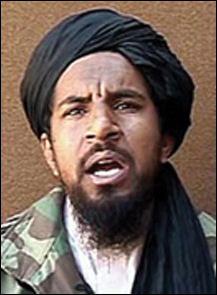
Abu Yahya al-Libi Libi’s death “underscores we cannot give in to Pakistan’s demand for an end to drone operations,” said Bruce Riedel, a former CIA analyst who is a counter-terrorism expert at the Brookings Institution. A senior Pakistani official played down Libi’s importance and said the government in Islamabad had played no role in providing information for the drone strike. The drone program is “unfinished bad business between us,” the official said. “They rarely get anything more than foot soldiers. It’s diminishing returns.”
U.S. and Pakistani officials confirmed that the missile targeting Libi had struck a house in North Waziristan at sunrise. A security official from the area said in a phone interview that numerous “foreigners” were described as being among the victims, and other Pakistani sources put the death toll at 16. U.S. officials disputed those reports, calling them “wildly” inaccurate.
Loss of Libi Crippling Blow for Al-Qaeda
Libi “s death was viewed as a particularly heavy loss for al-Qaeda because of his standing as both a spiritual figure and operational manager for a terrorist organization that has been struggling since bin Laden’s death. The death of Libi “puts additional pressure on al-Qaeda in the post-bin Laden era,” said White House press secretary Jay Carney. It “damages the group’s morale and cohesion and brings it closer to demise than ever before,” he said.
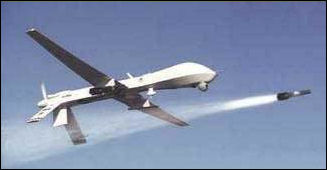
Predator firing a Hellfire missile Andrew Gully of AFP wrote: The loss of charismatic propagandist Abu Yahya al-Libi is a crippling blow to Al-Qaeda that could break up its central leadership. Considered to be number two in the hierarchy after bin Laden's successor, Ayman al-Zawahiri, his influence outweighs simplistic numeric distinctions. Beloved of rank-and-file jihadists, he held the religious credentials that other leaders lacked and served an invaluable role as an inspirational propagandist who kept the global terror network unified and on message. [Source: Andrew Gully, AFP, June 6, 2012]
“The death of Abu Yahya al-Libi is a devastating blow to Al-Qaeda's senior leadership, probably unrecoverable,” Brachman told AFP. “Nobody remaining in Al-Qaeda has his combination of scholarly credentials, personal charisma, and the ability to steer and guide Al-Qaeda's regional affiliates and broader global movement.”Zawahiri, a 60-year-old Egyptian former surgeon, is credited with great organizational skill and cunning, but he lacks bin Laden's potent charisma, and now his younger 49-year-old deputy -- a man who was in many ways his perfect foil -- is also gone.
“Not only was Libi revered, but he was loved by Al-Qaeda's followers,” said Brachman. “Abu Yahya not only illuminated the path for Al-Qaeda but in many ways helped to blaze the ideological trail on which the global movement would follow. Without him to herd the wandering cats of Al-Qaeda, the movement is likely to begin to drift.” Brachman said that another strike could end central Al-Qaeda as we know it. “This is one of two very important remaining nails in Al-Qaeda core's coffin,” he said. “If Zawahiri is put down soon, Al-Qaeda's senior leadership will be broken and the torch will have to pass to AQAP,” he said, referring to Al-Qaeda in the Arabian Peninsula, which is based in Yemen and considered Al-Qaeda's most active regional franchise.

Hellfire missile hitting a tank US President Barack Obama's administration trumpeted the death of a man who had appeared in countless Al-Qaeda videos and was considered the chief architect of its global propaganda machine. “Zawahiri will be hard-pressed to find any one person who can readily step into Abu Yahya's shoes,” one US official said. “In addition to his gravitas as a longstanding member of Al-Qaeda's leadership, Abu Yahya's religious credentials gave him the authority to issue fatwas, operational approvals, and guidance to the core group in Pakistan and regional affiliates.
“There is no one who even comes close in terms of replacing the expertise Al-Qaeda has just lost.”
Al-Qaeda's line of succession is unclear, but for US terrorism expert Bill Braniff, the number attached to Libi is unimportant compared to his value as a highly-visible propagandist. “It is easier for Al-Qaeda to find someone who can conduct an operational mission and much harder for them to find someone who can credibly serve as a voice, a mouthpiece,” he said. “You need someone who everyone can turn to and look at and listen to.”Braniff said the documents retrieved by US commandos from bin Laden's Abbottabad lair in Pakistan during the raid that killed him in May last year laid bare the importance of Libi's role as a “generational bridge — who could glue together Al-Qaeda's geographically disparate parts. “His loss exacerbates a leadership problem for an organization that had already lost its ability to shape the violence of associated organizations, evidenced in the bin Laden documents,” the expert said.
“For As-Sahab media, the only remaining center of gravity for Al-Qaeda core, the loss of their most charismatic figure may be devastating. It was through As-Sahab media featuring Al-Libi that Al-Qaeda core managed to convey the image of an ideologically and militarily competent outfit.” Libi “was most directly involved in maintaining relations with the affiliates,” including franchises in North Africa, Jones said. “His death will have an impact on those networks,” Jones said, though he added that al-Qaeda has managed to survive previous losses of key leaders. “No one is irreplaceable,” he said.
Atiyah abd al-Rahman

Atiyah abd al-Rahman Atiyah abd al-Rahman, a Libyan national regarded as Al-Qaida’s No. 2 after Osama bin Laden was killed, was killed himself only two months after taking the job in a missile strike in August 2011. Documents seized in the raid that killed bin Laden are believed to have helped track Rahman down.
Rahman served as No. 3 in al-Qaeda before bin Laden’s death Libi. As No. 2 he was regarded as the group’s general manager, answering to al-Qaeda’s senior commander, Ayman al-Zawahiri. . He was involved in Al-Qaida’s daily operations and was one of bin Laden’s principal correspondents. A 2010 message from Rahman expressed frustration with the CIA drone campaign, a source of particular concern because many of his predecessors in the third-ranking slot had been killed in strikes by the unmanned aircraft.
David Ignatius wrote in the Washington Post: “The death of Atiyah Abd al-Rahman in an August 22 drone attack in Pakistan may appear to be just another in the revolving-door fatalities among al-Qaeda’s operations chiefs. But it was a crucial blow to the core group that once surrounded Osama bin Laden. Rahman was bin Laden’s channel to the world. Their correspondence was the most important prize taken from bin Laden’s compound when he was killed May 2. They talked about everything: strategy, personnel, operations, political setbacks. Whatever thread still held al-Qaeda together passed from bin Laden through to Rahman. [Source: David Ignatius, Washington Post , August 28, 2011]
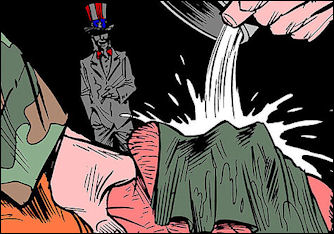
Waterboarding “Rahman’s death blunts al-Qaeda’s ability to stage a new mega-attack against America; it brings the top leadership of the group closer to extinction; and it increases the likelihood that the organization’s center of gravity will shift from Pakistan’s tribal areas to one of the affiliates, such as the robust al-Qaeda in the Arabian Peninsula, based in Yemen. Asked recently to name the most important remaining leader in al-Qaeda, a senior U.S. official had said it was Rahman. He explained that the nominal successor to bin Laden, Ayman al-Zawahiri, was actually a secondary figure — more a leader of the group’s Egyptian wing than of al-Qaeda as a whole. It would be in America’s interest if Zawahiri rather than Rahman were dominant, this official said, because Zawahiri was a divisive figure whose ad-hoc tactics were less threatening to America.
One of the subjects discussed frequently between Rahman and bin Laden was whether al-Qaeda’s ferociously violent tactics were alienating Muslims in the countries where it operated. That led to a fascinating 2005 missive from Rahman to Abu Musab al-Zarqawi, the head of al-Qaeda in Iraq, chiding him for targeting Shiite Muslims in his scorched-earth campaign in Iraq against America and its allies. And in more recent years, the two discussed the danger of seeking an Islamic “caliphate” in areas where al-Qaeda appeared strong, since that extremist move would likely alienate other Muslims. Better, they reasoned, to keep assaulting America.
Rahman fell to a Predator drone attack, the weapon that he and bin Laden had complained about so bitterly in their correspondence. Rahman had told his boss that this U.S. “intelligence war,” as bin Laden had called it, had made it nearly impossible for al-Qaeda to move, consider, recruit or train in the tribal areas of Pakistan. They had discussed whether al-Qaeda should move its headquarters to someplace safer. That relocation seems more likely, now that the man who anchored the group’s presence in Pakistan is dead.
Mustafa Abu al-Yazid
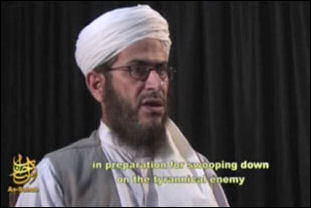
Egyptian-born Mustafa Ahmed Muhammad Uthman Abu al-Yazid, also known as Shaikh Sa’id al-Masri and Mustafa Abu al-Yazid , was Al-Qaida’s No, 3 at the tume of his death in June 2010. A founding member of al-Qaeda, he was key to the day-to-day control of Al-Qaida, with a hand in everything from finances to operational planning. A US official told AP, "Al-Masri was the group's chief operating officer... He was also the organization's prime conduit to Bin Ladin and Zawahiri. He was key to al-Qaeda's command and control.” The Sept. 11 Commission said that internally he argued against the 9/11 attacks "because he feared the U.S. response to an attack."
Yazid was involved in terrorist activities for more than 30 years. He joined radical students groups in Egypt with Ayman al-Zawahiri and served three years in prison for his involvement in the assassination of Sadat. After he got out of jail he showed up in Afghanistan and became one of the founding members of Al-Qaida. He was with Osama bin Laden in Sudan and served as Al-Qaida chief financial officer, managing secret bank accounts that helped finance the September 11, 2001 attack on the World Trade Center. He disappeared for many years and resurfaced in 2007 when he promoted to the “official in charge” of Al-Qaida . In 2007, Al Jazeera ran a tape of Shaikh Sa’id presenting himself as the leader of al-Qaeda in Afghanistan. He was promoted as those above him were killed off.
In June 2010, according to to AP and ABC News, U.S. officials reported that Qaeda’s No. 3 — Abu al-Yazid — had been killed. "Word is spreading in extremist circles of the death of Sheikh Sa'id al-Masri, widely viewed as the number three figure in al-Qaeda,” a US official told ABC News. “We have strong reason to believe that's true, and that al-Masri was killed recently in Pakistan's tribal areas. In terms of counterterrorism, this would be a big victory.” [Source: ABC News, AP, June 1, 2010]
US officials believed him to have been killed about a week before in Pakistan with his family — including his wife, three daughters and a granddaughter — in what is believed to have been a U.S. missile airstrike. Al-Yazid was reportedly killed in a 2008 but that turned out to be untrue. At that time Al-Yazid was the senior most Al-Qaida official killed under President Obama. "Though these terrorists remain extremely dangerous and determined to strike at the United States, the removal from the battlefield of top leaders like al-Masri is further proof that the tribal areas are not quite the safe haven al-Qaeda and its allies thought them to be," the official said.
Abu Zubayah
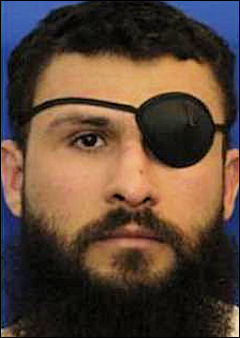
Abu Zubayah Abu Zubayah (real name Zain al-Abidin Mohammed Hussain) was regarded as the No. 3 man in Al-Qaida and viewed as a likely successor to Osama bin Laden. Reported as both a Palestinian and a Saudi, he was Al-Qaida’s top operational planner. A member of Osama bin Laden’s inner circle, he served as the logistics chief a the Afghanistan training camps and was believed to be involved in planning the East African Embassy bombings, the attack on the USS Cole and the attack on the World Trade Centr in New York on September 11, 2001.
Joseph Margulies, Abu Zubaydah’s lawyer, wrote in the Los Angeles Times: “When Abu Zubaydah was arrested in March 2002, American officials vilified him. The Justice Department lawyers described him as Osama bin Laden's "senior lieutenant." They said he was involved "in every major terrorist plot" carried out by Al Qaeda and that he was one of the planners of the Sept. 11 attacks. President Bush said he was a "trusted associate" of Bin Laden and vowed that he would be prosecuted.
In his 2006 book, "The One Percent Doctrine: Deep Inside America's Pursuit of Its Enemies Since9/11," journalist Ron Suskind questioned those depictions, and concluded that Abu Zubaydah had been a minor logistics man, in essence a travel agent. In 2009, both the Washington Post and the New York Times ran stories raising questions about the Bush administration's portrayal of Abu Zubaydah. The Post quoted a Justice Department official who described him as having provided militants with "above-ground support" and concluded that "to make him the mastermind of anything is ridiculous." The Times, relying on current and former intelligence officers, called the initial assessment "highly inflated" and said it reflected "a profound misunderstanding" of Abu Zubaydah's role, which was as a sort of "personnel clerk."
Capture, Interrogation and Torture of Abu Zubaydah
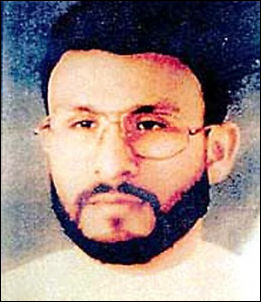
Abu Zubayah Abu Zubayah was captured in Pakistan a bloody gunfight in April 2002 when he and three other Arabs were cornered in a house in Faisalabad, a town near Lahore. He was tracked by U.S. and Pakistani intelligence officers who were able to locate the house where he was staying through computer and telephone wiretaps. He was wounded when one of his comrades tried to wrestle the gun away from a policeman. The comrade was killed. The raid took place at 2:00 a.m. at a two-story safe house in Pakistan . Commandos rounded up 62 suspects. A man who was seriously wounded while trying to flee was identified as Zubaydah by a Pakistani intelligence officer using a hastily-made voiceprint.
Zubuyah disappeared afer his arrest. He was held first taken to a secret prison in Thailand, where he was first interrogated, and then brought to Guantanamo. Abu Zubayah was initially hostile to those who questioned him but ultimately he ended up cooperating with interrogators, providing them with key information including the identity oof Khald Sheik Mohammed as the mastermind of the September 11, 2001 attack on the World Trade Center, the dirty bmb plot of Jose Padilla and tips that led to the capture of Ramzi bin al-Shibh, a key 9/11 plotter. To get Zubuyah to talk his captors nursed his wounds also addressed him using a pet name that his mother used to call him. [Source: Newsweek, May 4, 2009]

CIA memo about Abu Zubayah In his book “Why America Slept,” Gerald Posner said one U.S. investigator told him Zubaydah was "the Rosetta stone of 9/11" He also provided interesting details about Saudi royal family financing of Al-Qaida, helped along by Pakistani intelligence. Johanna McGeary wrote in Time: “Posner elaborates in startling detail how U.S. interrogators used drugs--an unnamed "quick-on, quick-off" painkiller and Sodium Pentothal, the old movie truth serum--in a chemical version of reward and punishment to make Zubaydah talk. When questioning stalled, according to Posner, CIA men flew Zubaydah to an Afghan complex fitted out as a fake Saudi jail chamber, where "two Arab-Americans, now with Special Forces," pretending to be Saudi inquisitors, used drugs and threats to scare him into more confessions. [Source: Johanna McGeary Time, September 8, 2003]
On the subject of torture, Joseph Margulies, Zubaydah’s lawyer, wrote in Los Angeles Times: “First, they beat Abu Zubaydah... Interrogators wrapped a towel around his neck and smashed him repeatedly into a wall. He was left confined in a tiny, pitch-dark box for hours; he was suspended naked from hooks in the ceiling; he was not allowed to sleep for days on end. He was also subjected to waterboarding, 83 times in August 2002 alone. In fact, the CIA brass at Langley ordered his interrogators to keep at it long after agents on the scene warned that he had been wrung dry.
One can question whether that kind of interrogation is ever justifiable, but in Abu Zubaydah's case it was particularly disturbing because the outlandish allegations against him were wrong. The U.S. no longer believes he was even a member of Al Qaeda, let alone a trusted associate or senior lieutenant of Bin Laden. [Source: Joseph Margulies, Los Angeles Times, May 16, 2012. Margulies is Abu Zubaydah’s Lawyer]
On whether or not the torture worked John Kiriakou, the first former CIA employee directly involved in the questioning of "high-value" al-Qaeda detainees to speak out publicly, said that using waterboarding “was like flipping a switch." Darius Rejali wrote in the Washington Post: But the al-Qaeda operative's confessions -- descriptions of fantastic plots from a man who intelligence analysts were convinced was mentally ill -- probably didn't give the CIA any actionable intelligence. Of course, we may never know the whole truth, since the CIA destroyed the videotapes of Abu Zubaida's interrogation. [Source: Darius Rejali, Washington Post, December 16, 2007]
Book: “Why America Slept” by Gerald Posner (Random House, 2003)
Masterminds of the African Embassy Bombings
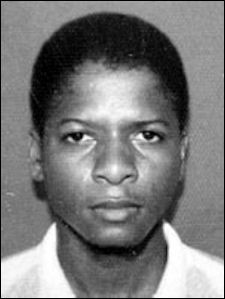
Ghailani Fazul Abdullah Mohammed was considered the mastermind of attacks on the U.S. embassies in Kenya and Tanzania. A native of the Comoros Islands he was regarded by U.S. intelligence as the most dangerous operative in Africa. He was No.1 on the FBI’s most wanted list for 13 years and had a $5 million price on his head.
In June 2011, Mohammed was killed at a security checkpoint in Mogadishu by Somali forces, who at first didn’t realize who they had killed. He was killed after a gunfight after a luxury car he and another man were driving was stopped and a pistol was found on one of the men. [Source: AP]
Mohammed was carrying a South African passport, sophisticated weapons, maps, other operational materials and tens of thousands of dollars in cash when he was killed. His identifty was confirmed by comparing his dead body with old pictures and family pictures and correspondence with other militants that was found in his possession. It was originally reported that Mohammed was killed by U.S. missile strike in Somalia in January 2007 but was not true.
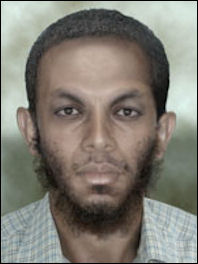
Fazul Abdullah Mohammed Ahmen Khalfan Ghailani is a Tanzanian Al-Qaida operative indicted for the 1998 bombings of the U.S. embassies in Nairobi and Dar es Salaam and is regarded as one of the organizers of the attack. He was on the F.B.I. most wanted list and had a $25 million bounty on his head.
In July 2004, Ghailani was captured by Pakistani authorities. The capture followed a 10-hour shootout in the industrial city of Gujarat, 125 miles south of Islamabad. The capture was organized by the CIA and carried out by agents of the ISI and was made possible by the capture of Aruchi, a well-connected nephew of Khalid Sheik Mohammed, and the seizure of CDs packed with information.
Ghailani ended up in Guantanamo. The first Guantanamo detainee to a face a civilian trial, he was convicted of one charge, conspiracy to destroy U.S. property, in a trial that finished in New York in November 2011. He was acquitted of more than 280 other counts against him. He was 36 when he was charged. His lawyer portrayed him a young errand boy who had little to do with any actual bombing plot. Ghailani still faces life in prison for the conspiracy charge. The trial was seen a test for other trails for Guantanamo detainees.
Hambali
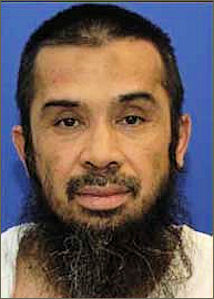
Riduan Isamuddin
(alias Hambali)Riduan Isamuddin, alias Hambali, was regarded as the operations chief for Jemaah Islamiyah, its main link with Al-Qaida and a primary Al-Qaida operative in Southeast Asia. He made plans and gave out orders with Jemaah Islamiyah and was reportedly the only non-Arab member of the Al-Qaida’s military committee.
Hambali is a Sundanese Indonesian. The son of peasant farmers from West Java, he was a stocky man with a round face. He worse glasses and had a wispy beard and blended easily into crowds Born in 1966, Hambali was the eldest son of 13 children. His great grandfather founded a religious school. His mother told Time that as boy he was “very religious, but also very quite, aloof and reserved.” As a teenager he became involved in local groups that later would become Jemaah Islamiah. In 1985, he accompanied Bashir to Malaysia and the two men ran a religious school together. In the late 1980s he fought for the mujahideen against the Soviets in Afghanistan. He returned to Malaysia in the early 1990s and lived in a $25 a month shack and supported himself by selling satay on the streets.
Hambali is the alleged organizer of the Bali bombing that killed 202 people in October 2002 and the bomb attack on the Jakarta Marriot hotel which left 12 dead. He was also believed to be involved in setting up meeting for the September 11th hijackers and participated in the 1995 plot to blow up 11 U.S. airliners over the Pacific.
See Separate Article JEMAAH ISLAMIYAH factsanddetails.com
Omar al-Faruq
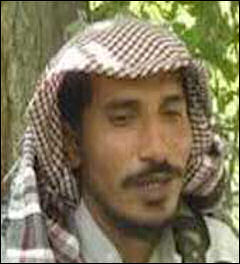
Omar Farouq Omar Farouq (also Faruq, Farooq), a Kuwaiti-born Al-Qaida member, was a point man for Al-Qaida in Southeast Asia. Married to an Indonesian woman and settled in a quiet village outside Jakarta, he was involved with the Christmas Eve bombings in 2000 and a number of projects — such as an assassination attempt of Indonesian President Megawati and a plan to bomb of U.S. embassies throughout Southeast Asia and a plot to attack U.S. Navy ships in Surabaya — that never came off for one reason or another.
Farouq was high enough up in Al-Qaida that he gave Osama bin Laden’s right hand man Ayman al-Zawahiri a tour of the Aceh Province of Indonesia and made contacts between Al-Qaida and the Indonesian cleric Abu Bakur Bashir. An attempt to assassinate Megawati with a bomb didn’t come off because the man who was supposed to carry out the mission blew his leg off with a bomb.
Farouq was captured by Indonesian authorities in Indonesia and handed over to the CIA. He escaped from Bagram air base in Afghanistan in July 2005.
Anwar al-Awlaki
Anwar al-Awlaki was a U.S.-born cleric who inspired a number of terrorist suspects arrested in the United States, Canada and elsewhere. He released a popular video that encouraged Muslims to join Al-Qaida and was identified by U.S. Intelligence as the “chief of external operations” for Al-Qaida’s Yemen branch. He held a degree in civil engineering from Colorado State University and a masters in divinity from an Arab theological school.
Awlaki (also spelled Aulaqi) was tied to the September 11th hijackers and Umar Farouk Abdukmatullah, the Nigerian “underwear bomber” who tried to blow up a Detroit-bound airline on Christmas Day 2008. He exchanged dozens of e-mails with Maj. Nidal Malik Hasa, the U.S. Army psychiatrist involved in the killing of 13 people at Fort Hood military base in Texas in November 2009.
Through much of the 2000s he was based in Yemen. From his mountain hideout there he issued fiery English-language speeches about jihad that were widely disseminated on the Internet and easy to access on YouTube. A U.S. counter-terrorism official told the Los Angeles Times that over the years he went from “propagandist to recruiter to operational player.”
Killing of Anwar al-Awlaki and His 16-Year-Old Son
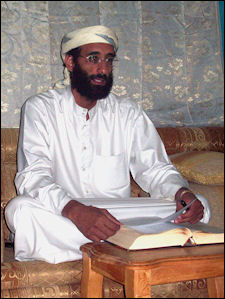
Anwar al-Awlaki Awlaki was killed by drone airstrike in Yemen in September 2011. In the attack several missiles were fired from multiple CIA drones. Two high-level Al-Qaida leaders in Yemen — Nasser al-Wuhayashi, Al-Qaida’s regional leader in Yemen, and his deputy Said Ali al-Shihri — and the English-speaking Al-Qaida operative Samir Khan and master bombmaker Ibriham al-Asiri were also killed in the attack. At least 30 suspected militants were attending a meeting when the missiles struck. A U.S. official called Wuhayashi and al-Shihri as “the two biggest fish in the most violent offshoot of Al-Qaida that exists in the world.”
Some were critical of the killing of Awlaki, who had survived an earlier missile strike, because he was a U.S. citizen. Samir was also a U.S. citizen from North Carolina. A U.S. counter-terrorism official told the Los Angeles Times, “If an American is stupid enough to make cause with terrorists abroad to frequent their camps and take part in their plans, he or she can’t expect their citizenship to work as a magic shield. If you join the enemy, you join your fate to his.”
Awlaki’s 16-year-old son Abdulrahman , a U.S. citizen who was born in Denver was killed around the same time in a separate missile strike. His grandfather, Awlaki’s father, a former Yemeni agriculture minister, told the Washington Post, “To kill a teenager is just unbelievable and they claim that he is an Al-Qaida militant. It’s nonsense. They want to justify his killing, that’s all.” The missile strike that killed Abdulrahman killed nine other people, including Ibrahim Banna, an Egyptian media specialist in the Yemeni branch of Al-Qaida.
Al-Qaida Drop Outs
Michael Jacobson wrote in the Washington Post: Al-Qaeda prides itself on its esprit de corps, but key members have turned against the group from its earliest days. These include Jamal Ahmed al-Fadl, a Sudanese radical who was one of al-Qaeda's first members and helped work (unsuccessfully) in the early 1990s to procure uranium for the organization; Essam al-Ridi, an Egyptian veteran of the 1980s jihad against the Soviets who later purchased an airplane in the United States to help ship Stinger missiles from Pakistan to Sudan; and L'Houssaine Kherchtou, a Moroccan who trained to serve as bin Laden's personal pilot. (All three became prosecution witnesses in the trial of the bombing of the U.S. embassies in Kenya and Tanzania in August 1998.) [Source: Michael Jacobson, Washington Post , March 23, 2008; Jacobson is a former staff member of the 9/11 commission and a senior fellow at the Washington Institute for Near East Policy]Looking at al-Qaeda dropouts, some clear patterns emerge. Some left after becoming disillusioned with the group's tactics and strategy. Probably the unkindest cut from any former member was delivered by bin Laden's fourth son, Omar bin Laden, who had spent nearly five years living in Afghan training camps. After 9/11, Omar quit al-Qaeda, calling the attacks "craziness," according to the journalist Peter Bergen. "Those guys are dummies," bin Laden's son said. "They have destroyed everything, and for nothing. What did we get from Sept. 11?"
Image Sources: Wikimedia Commons
Text Sources: New York Times, Washington Post, Los Angeles Times, Times of London, The Guardian, National Geographic, The New Yorker, Time, Newsweek, Reuters, AP, AFP, Wall Street Journal, The Atlantic Monthly, The Economist, Global Viewpoint (Christian Science Monitor), Foreign Policy, Wikipedia, BBC, CNN, NBC News, Fox News and various books and other publications.
Last updated July 2012
Image Sources: Wikimedia Commons and Al-Jazeera
Text Sources: New York Times, Washington Post, Los Angeles Times, Times of London, The Guardian, National Geographic, The New Yorker, Time, Newsweek, Reuters, AP, AFP, Wall Street Journal, The Atlantic Monthly, The Economist, Global Viewpoint (Christian Science Monitor), Foreign Policy, Wikipedia, BBC, CNN, NBC News, Fox News and various books and other publications.
Last updated July 2012
